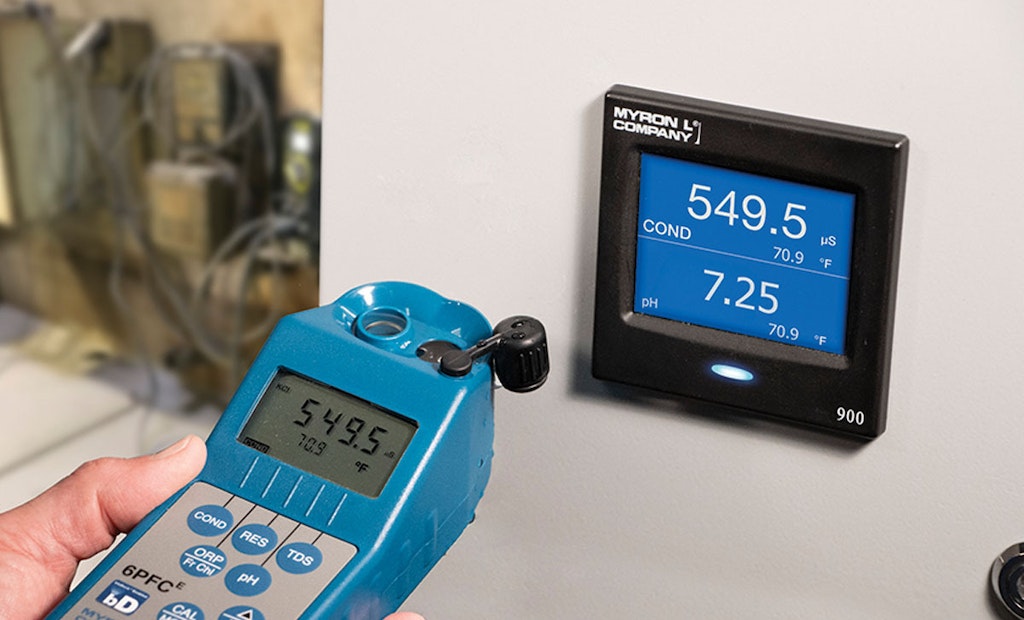Interested in Instrumentation?
Get Instrumentation articles, news and videos right in your inbox! Sign up now.
Instrumentation + Get AlertsController solves facility’s chromium contamination problem
Problem: An FAA Certified Part 145 Repair Station maintenance repair overhaul facility was unable to discharge to their treatment plant because the hexavalent chromium Cr(VI) concentration in their wastewater stream was over the regulated discharge limit. The manager of the facility called Electroplating Consultants International to solve the problem.
Solution: ECI identified sloppy dosing by existing controllers and excess polymer and bisulfite treatment. They selected Myron L Company 900 Series controllers for both pH and ORP control based on experience with their high degree of accuracy and reliability. The units were also manufactured to the standard 1/4 DIN size shared by the old controllers, making control panel replacement easy. Sodium hydroxide concentration was then regulated via pH control between 7.5 to 8, and bisulfite addition was regulated via ORP control between 130-140 mV.
Result: Cr(VI) levels were immediately reduced to 0.96 ppm with haul-offs and recirculation no longer needed. ECI then incorporated chemistry changes that enabled the facility to reduce caustic and sulfuric usage while eliminating the need for standard bisulfite treatment. This made working conditions safer while stabilizing and lowering solid waste volume. The MRO continues to maintain compliance with their discharge limits, with recent chromium concentration tests indicating a negligible 0.013 ppm. 760-438-2021; www.myronl.com

Going digital breaks down data silos and saves time in wastewater lab
Problem: The City of San Luis Obispo wastewater treatment laboratory conducts over a dozen daily tests and was using paper bench sheets to enter and analyze data. The results from the physical sheets were then entered into the water information management system, making two-step manual process that provided information to operators in the mid-afternoon.
Solution: The city replaced paper log books and bench sheets with a water information management system (WIMS) from Aquatic Informatics. Lab technicians now use laptops at sampling and analysis stations to enter data. Once a variable or sample result is entered, it automatically populates on other digital bench sheets that have that same variable. Calculations are automated, reducing the time to create reports. Edits to sheets are automatically time-stamped for tracing and tracking. The WIMS enables parameter limits to be set for any variable. A result outside a limit turns the cell a different color, indicating that action is required.
Result: “Before WIMS we submitted our data to operations by 3 p.m.,” says Tanner Duncan, water quality analyst. “Now they get the results by 9 a.m. That’s a significant time savings.” Having data stored and accessible in one place has significantly improved reaction times as operators receive immediate alerts and can adjust the treatment process sooner. 877-870-2782; www.aquaticinformatics.com






